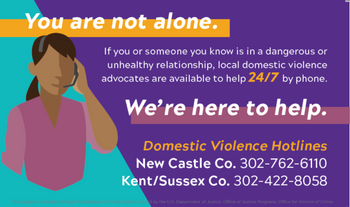What is Stalking?
Information shared from SPARC, a project of AEquitas.
https://www.stalkingawareness.org/
Stalking Definition:
A pattern of behavior directed at a specific person that would cause a reasonable person to fear for the person’s safety or the safety of others; or suffer substantial emotional distress.
Stalking can be dangerous.
While every case is different, people who stalk can be very dangerous. Stalkers may threaten, attack, sexually assault, and/or even kill their victims.
Unfortunately, there is no single psychological or behavioral profile that predicts what stalkers will or will not do. Stalkers’ behaviors can escalate from more indirect ways of making contact (like phone calls or texts) to more direct contact (like delivering gifts or showing up where you are).
Many victims struggle with how to respond to their stalkers. Some victims try reasoning with their stalkers to placate them, hoping that “being nice” will make it stop. Many victims minimize their experiences of being stalked, telling themselves “it’s not that bad.” Still others may confront or threaten the stalker or try to “fight back.”
While victims cannot control the stalking behavior, they should feel empowered to take steps to keep themselves, their families, and their loved ones safe.
General Tips for Victims
1. Trust your instincts. Victims of stalking often feel pressured by friends or family to downplay the stalker’s behavior, but stalking poses a real threat of harm. Your safety is paramount.
2. Call the police if you feel you are in any immediate danger. Explain why the stalker’s actions are causing you fear.
3. Keep a record or log of each contact with the stalker. You can use this log as an example. Be sure to also document any police reports.
4. Save evidence when possible. Stalkers often use technology to contact their victims. Save all emails, text messages, photos, and postings on social networking sites as evidence of the stalking behavior. You may also want to consider how to use your technology and your devices in a safer manner. For more information, please visit the National Network to End Domestic Violence Safety Net Project’s Tech Safety Site.
5. Get connected with a local victim service provider who can assist you in exploring your options as well as discuss safety planning.





